The first plastid genome for the plant parasite family Cytinaceae
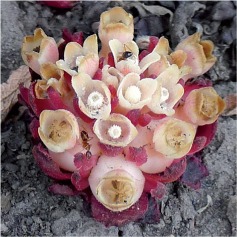
Parasitic plants are a noticeable exception to the evolutionary stability of the plastid genome, but only some parasite lineages have been sequenced so far. Roquet et al. (pp. 885–896) provide the complete plastome of Cytinus hypocistis, the first parasite sequenced for Malvales. This extremely divergent genome is highly reduced and some regions of this genome are likely to have evolved under relaxed negative selection, suggesting that further plastome reduction is ongoing and linked to the loss of photosynthetic activity. Increased selection intensity and strong positive selection are detected for rpl22 in Cytinus, which might indicate an evolutionary role in the host-parasite coevolution.
Variation in outcrossing and photosynthetic rates in Clarkia reveals independent evolutionary transitions
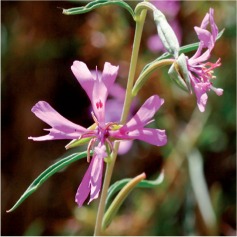
Adaptive hypotheses to explain the evolution of self-fertilisation in plants are well-characterised, but alternative evolutionary pathways are underexplored. The mating systems and photosynthetic rates of some sister Clarkia have diverged in parallel, an evolutionary pattern that could have evolved through genetic correlations or as a result of independent transitions. Ivey et al. (pp. 897–905) examine photosynthetic and outcrossing rates within multiple wild populations of two mixed-mating Clarkia taxa over two years. Within-population trends that mirror the between-taxon divergence would support the hypothesis of genetic correlation. Despite substantial variation in both traits, there was no consistent pattern observed within populations, suggesting that the between-taxon divergence more likely reflects independent evolutionary transitions.
Complementary circadian rhythms regulate floral attractiveness and reward in Silene colorata

Most Silene species possess either diurnal or nocturnal pollination syndromes. Prieto-Benítez et al. (pp. 907–918) study a Silene species with mixed floral features to reveal the finely tuned relationships between flower responses such as petal opening, nectar production and scent emission, and overall pollination success as governed by complementary circadian rhythms. The circadian rhythm regulating floral attractiveness and reward in S. colorata is predominantly adapted in favour of noctural flower visitors, and petal opening at dusk is correlated with nectar secretion and higher scent production during the night. However, when the environmental conditions were experimentally changed, the optimal time of flower attraction and pollination is shown to lengthen into the morning; petals remained open in the morning, when nectar and pollen were still available. Pollen deposition was similarly effective at night and in the morning, but less effective in the afternoon. These results, confirmed by field studies, suggest that diurnal pollination may help to guarantee the plant’s reproductive success when nocturnal pollinators are scarce.
Elevating expression of phytoglobins enhances photosynthetic response of root-flooded maize
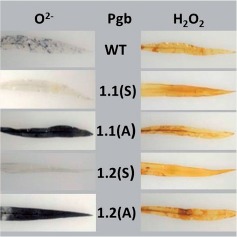
Decreased crop photosynthetic rates are a major consequence of root flooding as severe perturbations of the photosynthetic machinery result from elevated levels of reactive oxygen species (ROS). Phytoglobins (Pgbs) are ubiquitous proteins induced by several types of stress that affect plant response by modulating nitric oxide. Youssef et al. (pp. 919–931) demonstrate that elevating the expression of the heme protein, phytoglobin, in root-flooded maize results in greater retention of photosynthesis due to phytoglobin’s role in reducing leaf damage by ROS. The study shows a correlation between maize cultivars exhibiting increased expression of one of the phytoglobins, Pgb1.2, during flooding and a sustained rate of photosynthesis in the plants post-submergence, with far-reaching implications for the breeding of maize with improved flooding tolerance.
A plasma membrane H+-ATPase regulating soybean root resistance to aluminium toxicity
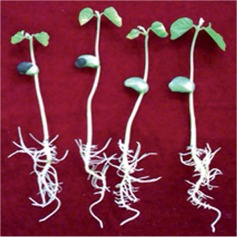
Aluminum (Al) toxicity is a major limiting factor for plant growth and crop production in acidic soils. The plasma membrane H+-ATPase is involved in regulating resistance to Al via enhanced citrate exudation by soybean roots under Al stress. In their investigation of the processes underlying this resistance. Wang et al. (pp. 933–940) find that enhanced citrate exudation and increased soybean root growth under Al stress were associated with auxin (IAA) accumulation in soybean roots. They show that IAA-mediated increases in Al-induced citrate exudation in soybean were linked with upregulation of the citrate transporter gene (GmMATE) and activation of the root-cell plasma membrane H+-ATPase.
A genome-wide association study of wild Miscanthus in the Russian Far East
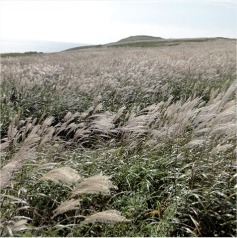
Miscanthus is a genus of C4 perennial East Asian grasses that is emerging as a leading bioenergy crop. Clark et al. (pp. 941–955) collected germplasm of M. sacchariflorus and M. sinensis in the Russian Far East, at the northern extent of the range of these two species. Geographic distributions suggest greater winter hardiness in M. sacchariflorus than in M. sinensis. Accessions were genotyped using restriction site associated DNA sequencing (RAD-seq) and a preliminary genome-wide association (GWA) analysis was performed to identify biomass traits in M. sacchariflorus. The data highlights the value of phenotypic data obtained in situ during germplasm collection and will have implications for breeding Miscanthus and sugarcane cultivars with improved adaptation to cold. The authors propose a strategy to facilitate the rapid utilisation of new germplasm collections by implementing low-cost SNP genotyping to conduct GWA analysis of phenotypic data obtained at collection sites, with the aim of providing plant breeders with actionable information on desirable traits and alleles found in accessions.
Genepool of a year-long bean crop, Phaseolus dumosus
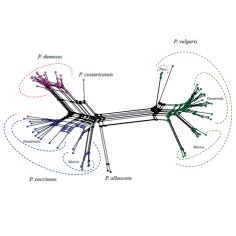
Studying the relationships between major crops and the secondary genepools of related species that are more resistant to climate challenges, Mina-Vargas et al. (pp. 957–969) employ nuclear and chloroplast genetic markers to carry out a comprehensive investigation of the genetic diversity of a year-long staple Guatamalan legume crop. They find that the common bean, Phaseolus dumosus, which has high levels of stress resistance, is closely related to its wild relatives P. coccineus and P. vulgaris, and arose from recent hybridizations between them. Further to analysing all collected specimens of P. dumosus, the authors conclude that this species seems to have lower genetic diversity than its relatives. They also identify regions where diverse populations with additional germplasm of potential value for introgressing favourable traits into other crops within the P. vulgaris genepool might still remain to be uncovered.
Intra-species ecological divergence in irises
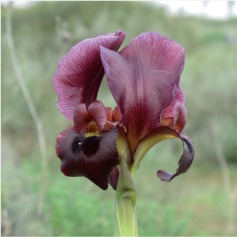
Speciation is often described as a continuum, from minor divergence of populations to complete reproductive isolation between species. Within-species population divergence can shed light on the first steps of speciation and the mechanisms underlying it. Yardeni et al. (pp. 971–982) show that ecological divergence of Iris atropurpurea populations is associated with partial reproductive isolation. They find no spatial pattern of reproductive isolation, suggesting that ecological differentiation is predominant over isolation by distance and reduced gene flow in this species. These findings also have implications for conservation management and genetic rescue of the highly fragmented and endangered I. atropurpurea.
Functional significance of crown shape diversity and plasticity across tropical tree species
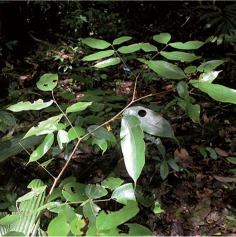
It has been maintained that selection for sapling performance in the strongly limiting light conditions of tropical forest understorey is likely to maximise whole-plant light capture efficiency. In their investigation of a suite of morphological traits at various hierarchical scales, Laurans et al. (pp. 983–996) found no evidence to support this hypothesis among and within 14 tree species within the region of French Guiana. The shallow crown of shade-intolerant species in shade is shown to result from a slow crown vertical growth and not from a shortened leaf lifespan, which would be a sign of self-shading or of an adaptive strategy of nutrient recycling.
A process-based model of C and N metabolism in the wheat culm
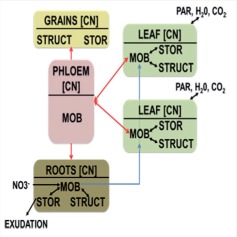
Linking traits and metabolic processes to whole plant performance results in improved crops. Barillot et al. (pp. 997–1013), present CN-Wheat, a comprehensive and mechanistic model of carbon (C) and nitrogen (N) metabolism within wheat culms after anthesis. Culm organs are described explicitly and include structural, storage and mobile metabolites. An innovative aspect of CN-Wheat lies in the regulation of physiological processes by metabolite concentration and the environment perceived by the organs, together with the calculation of the balance of primary metabolites. Thus, metabolite concentrations act as the internal variables that allow for integration of multiple processes.
Simulating carbon and nitrogen patterns using an integrated model of wheat functioning
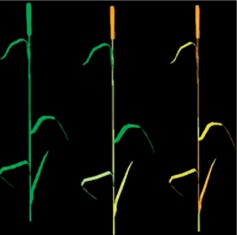
Based on a mechanistic approach, the CN-Wheat model simulates the fluxes of carbon (C) and nitrogen (N) metabolites in wheat plants after anthesis. Barillot et al. (pp. 1015–1031) show that the CN-Wheat model can be used to predict allocation and dynamics of C and N resources among culm organs in conjunction with observations from field experiments. CN-Wheat also provides insights into how depletion of mobile metabolites caused by grain filling ultimately results in the cessation of resource capture. CN-Wheat appears to be an appropriate model with which to investigate and reveal the myriad functions of integrated plant behaviour.
The temporal dynamics of xylem refilling and recovery from embolism in intact maize leaves
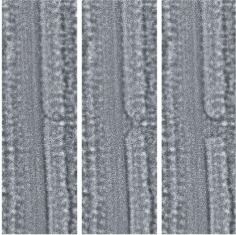
A direct observation of embolism repair in intact plants is essential in order to understand the mechanisms that regulate water transport in plants. Ryu et al. (pp. 1033–1042) demonstrate rapid radial water-refilling and removal of gas bubbles in intact maize leaves, by X-ray micro-imaging of embolised xylem vessels. Water refilling along the radial direction leads to rapid recovery from embolism within several minutes. These findings on the xylem refilling process in a well-watered plant could stimulate discussion on embolism repair mechanisms that are not osmotically driven in monocotyledon, herbaceous plants.
The transition from scalariform-to-simple vessel perforation plates
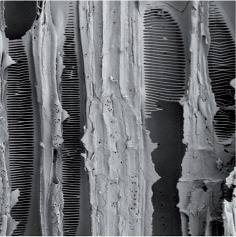
Flowering plants with simple vessel perforations have evolved from species bearing scalariform perforations but there is a scarcity of integrative studies explaining why these transitions in wood evolution have happened. Lens et al. (pp. 1043–1056) find that Viburnum, characterised by scalariform vessel perforations (ancestral), diversified earlier than the closely related Sambucus, characterised by simple perforations (derived). The lack of selective pressure for high conductive efficiency during early diversification resulted in Viburnum retaining the ancestral perforation plate type, while higher temperatures during early diversification of Sambucus triggered the evolution towards simple vessel perforations, resulting in more efficient long distance water transport mechanisms.


